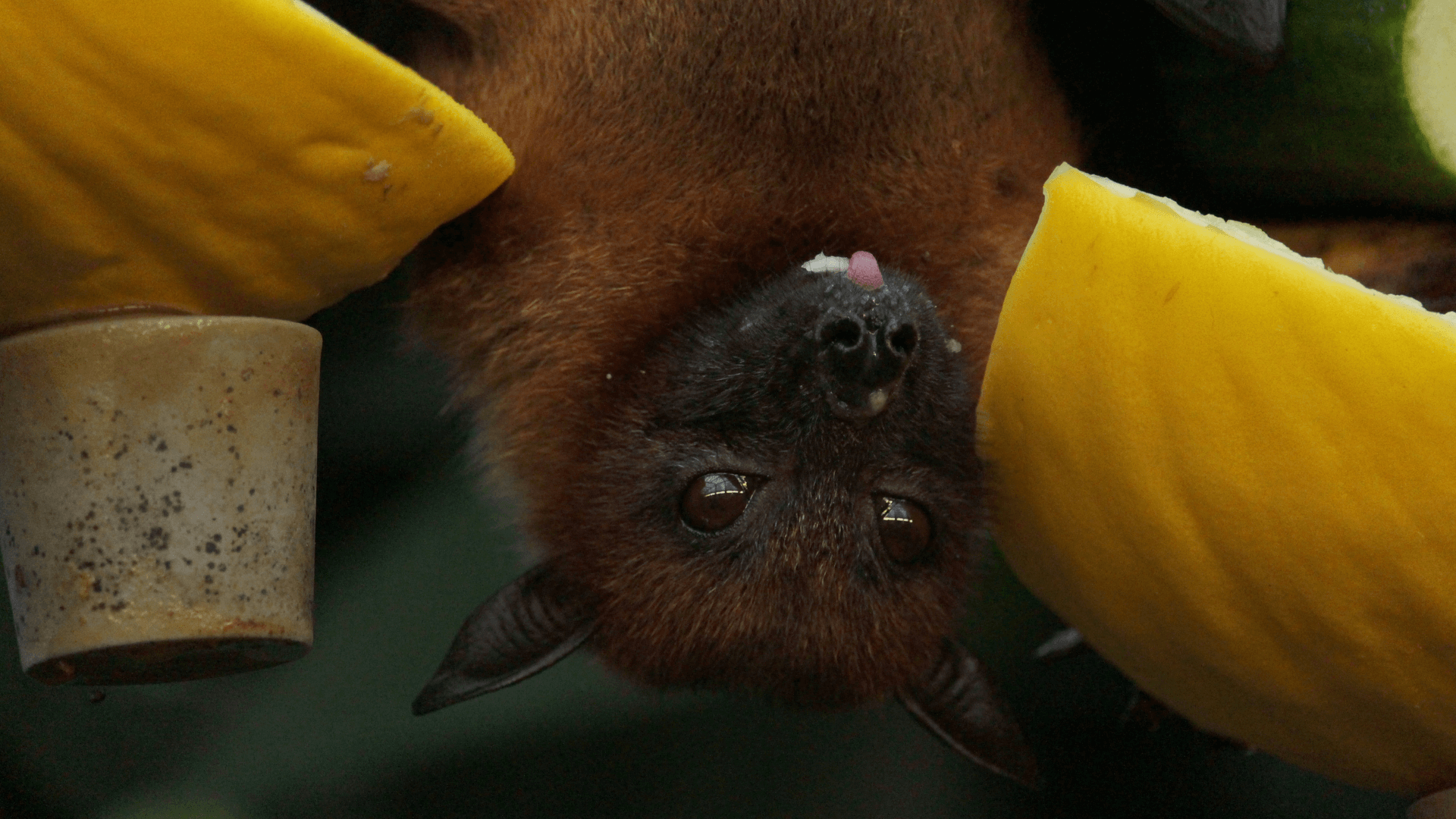Bats are misunderstood. They’re often considered the terror flapping in the night that’ll swoop down and attack humans for their sweet blood. This isn’t true. Before you start rubbing garlic all over your body this Halloween season, we want to tackle some myths surrounding this misunderstood mammal and show you how helpful and cool they really are.
- Bat’s dining menu: And what will the bat have this evening? All 13 native Florida bat species exclusively eat insects. You heard that right, JUST insects! You can expect them to snack on flies, wasps, mosquitoes and more. Bats love eating insects so much that they eat around 1000 every night (if only we could eat 1000 servings of our favorite food…). This makes bats a great natural form of pest control. Now you know there’s absolutely no human blood for dinner!
- Pollination information: Bats are a proud member of the “Pollen Nation” with bees, butterflies, birds and more! Much like their fellow “B” pollinators, bats are critical to the development of fruits and flowers. Bats help pollinate when they feed on nectar in flowers and also help disperse seeds. What’s cuter than a bat’s face covered in yellow pollen? Absolutely nothing. Be sure to thank a bat next time you enjoy a mango or banana
- Great guano: Bat poop is awesome! We can’t get enough of this stuff. Bat poop is primarily used as a fertilizer because it’s rich in nitrogen, phosphate and potassium, which really help plants grow. Bat poop is mostly popular in organic farming. Don’t put that organic apple down though! This is a natural and completely safe fertilizer. No bats or bat poop were harmed in the making of your food.
- The Bat Cave: Remember the time you and your classmates huddled around each other at 7am while your teacher tried removing the bat in your classroom? Or maybe it was the time you and your parent had to crawl up to the attic to remove a couple of bats from your house! These are just a few examples of man-made structures that bats like to roost in. Bats can also either roost alone, with small groups or in large colonies. If you suspect bats are living in your home, contact animal control. For the safety of the bat, and yourself – trying to a remove a bat on your own is not reccomended as they can carry rabies.
Extra fun fact:
Bats are bloodsuckers! There are three vampire bat species (out of more than 1,300 bat species) that feed on blood, but only one targets mammals. All vampire bats are limited to Latin America. Oh, and they don’t suck blood, they lap it like kittens with milk! Click here to learn more about bats.
So, the next time you see a bat out at night, don’t scream and run away! Take a moment to appreciate the helpful and cool things the over 1300 species of bats around the world do.
Want to bust more spooky science myths? Swoop on over to Orlando Science Center during Spooky Science Month to learn about bats and more during your next visit.
